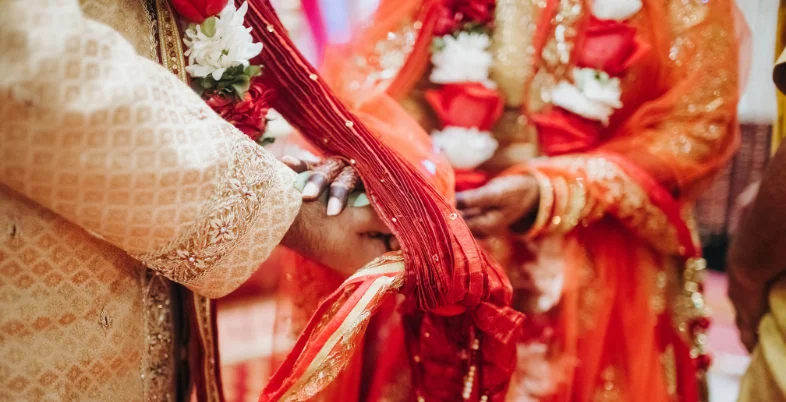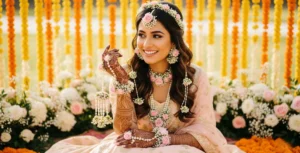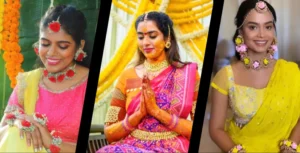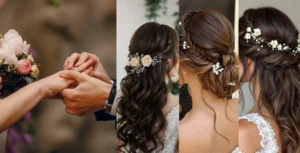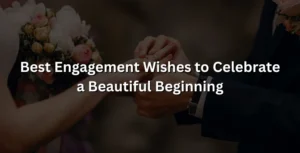A Hindu wedding is not merely a union of two individuals—it is the confluence of families, traditions, spiritual vows, and a celebration of culture that can last several days. Though specific rituals vary by region, caste, and family customs, most Hindu weddings across India share a spiritual logic centered on family, purity, prosperity, unity, and blessings. This guide to Hindu Wedding Rituals Step by Step outlines key ceremonies from pre‑wedding events to post‑wedding traditions, offering both their significance and what happens during each stage.
Pre‑Wedding Rituals
Engagement
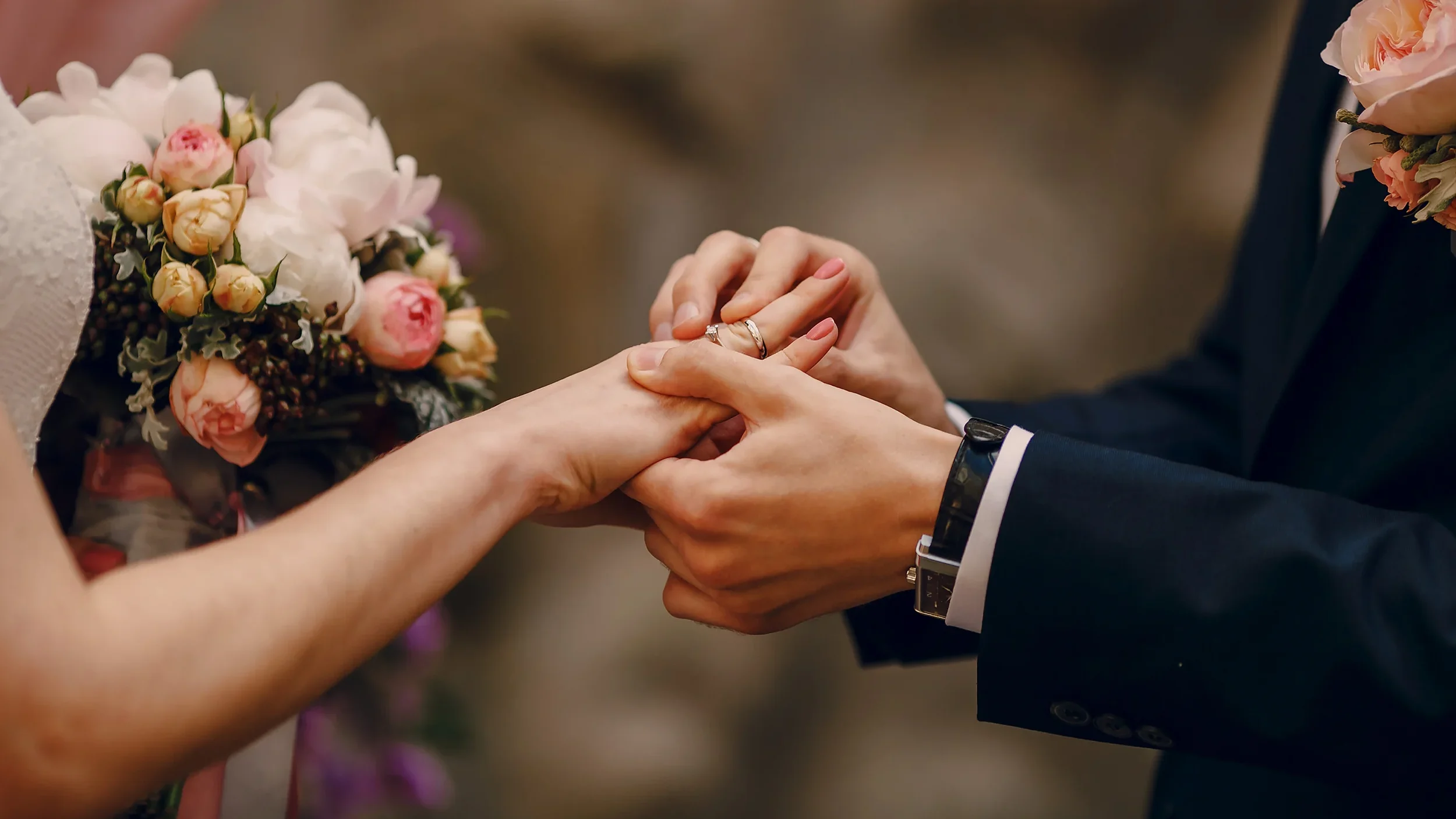
The engagement ceremony—also known as sagai, or varmala is the formal commitment between bride and groom. Rings are exchanged, blessings sought, and an auspicious date for the wedding is confirmed, often by consulting a priest or astrologer.
Mehndi Ceremony
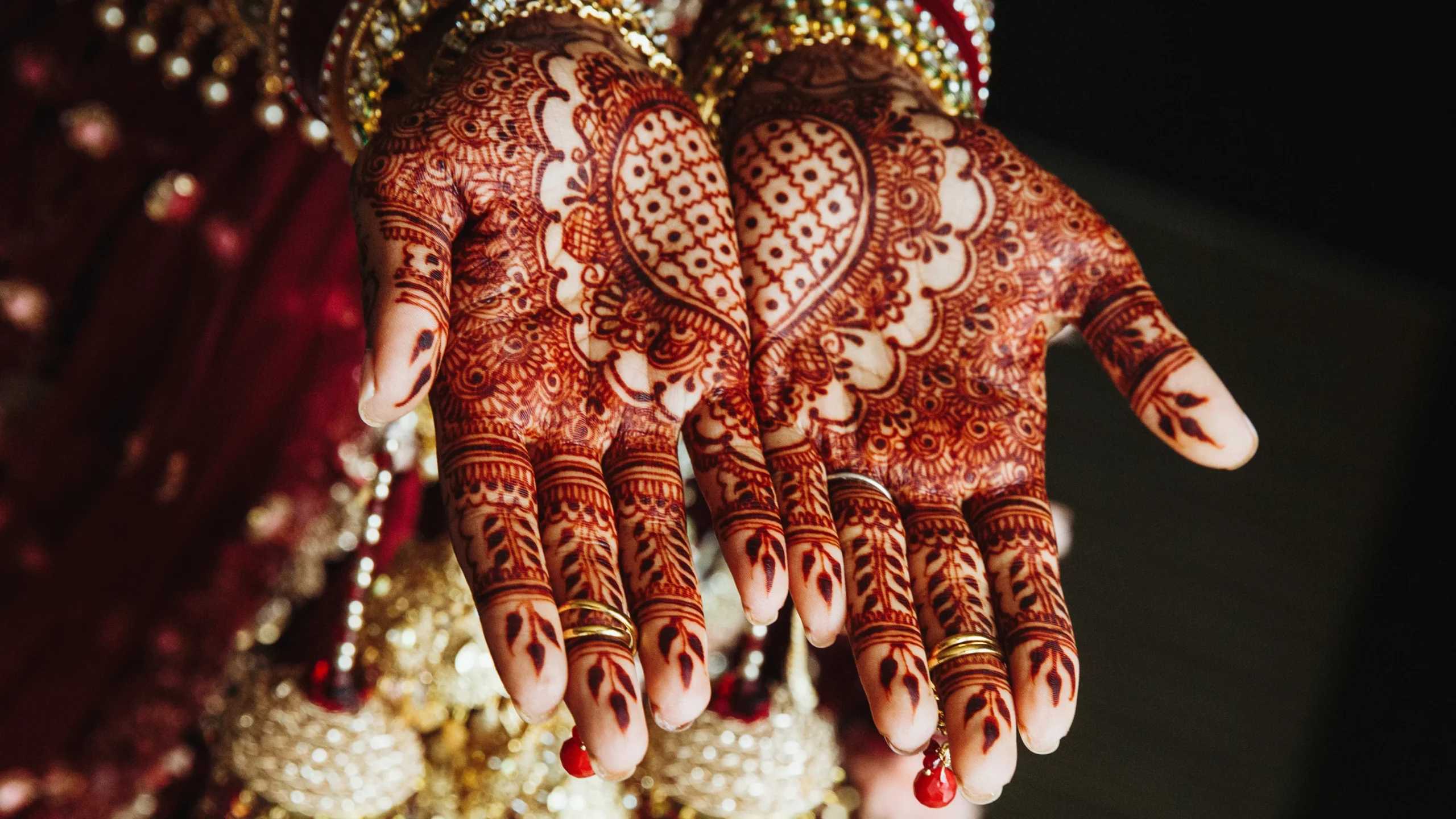
Held a day or two before the main wedding, Mehndi is a festive gathering of female family and friends. The bride’s hands and feet are adorned with intricate henna designs, believed to bring luck and fertility. The darker the stain, folklore says, the deeper the love or mother‑in‑law’s affection. Often, playful traditions like incorporating the groom’s name in the design delightfully engage guests.
Sangeet
The Sangeet is a musical evening where both families come together in vibrant song, dance, and revelry. Once a private bride-centric affair, it has evolved into a co-ed celebration filled with choreographed performances, skits, and Bollywood flair.
Haldi Ceremony
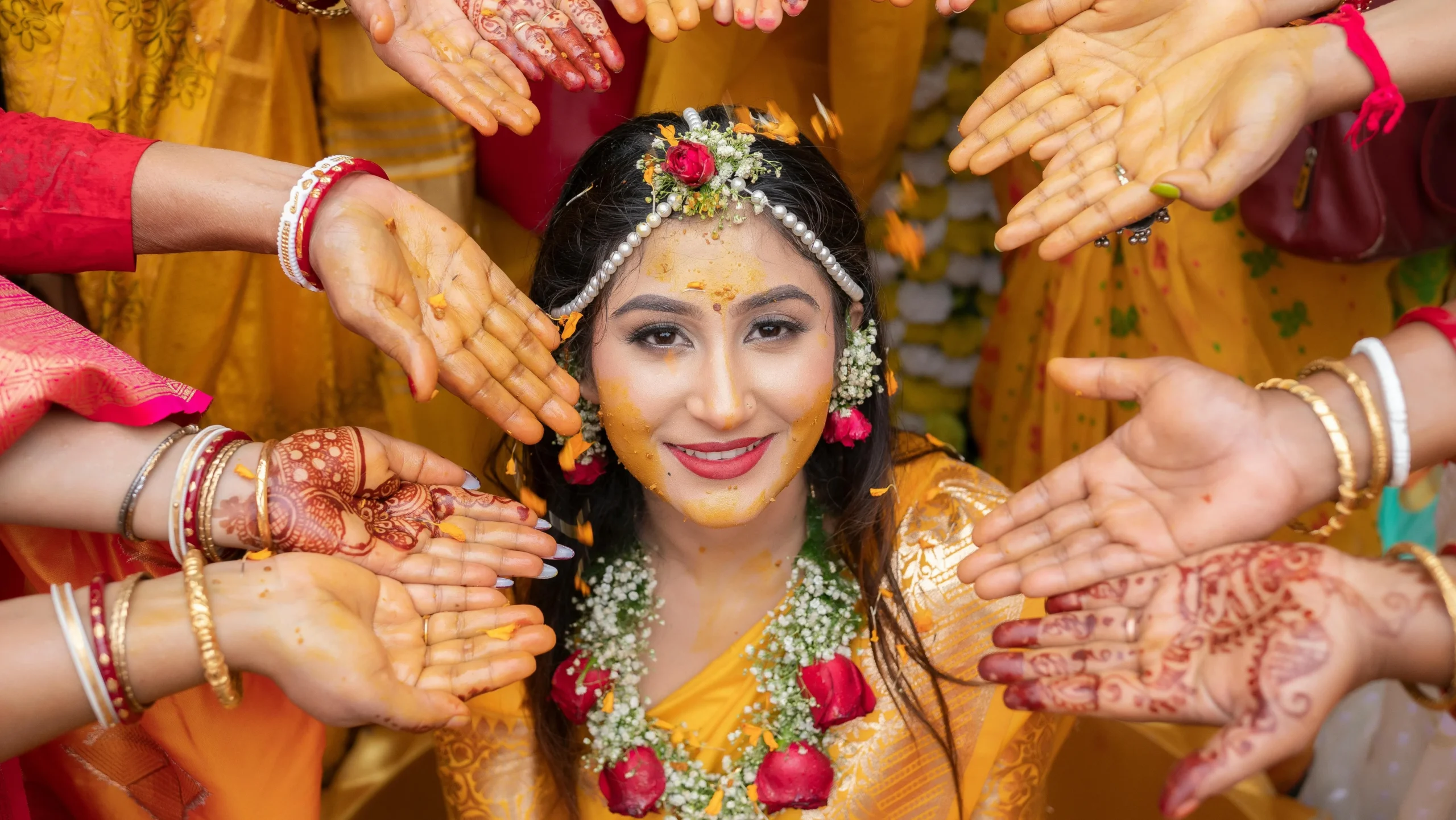
On the morning of the wedding, turmeric paste is applied to both bride and groom in the Haldi ceremony, symbolizing purification, beautification, and protection against evil influences. It’s a joyful, messy event involving family splashing turmeric, flower petals, and laughter.
Hindu Wedding Rituals Step by Step – Wedding Day Rituals
Baraat & Groom’s Arrival
The groom arrives in a lively procession known as the Baraat , often on horseback, elephant, or with dancing guests. His entourage is welcomed by the bride’s family with aarti, tilak, and rice tossing (akshat), signifying blessings and protection.
Milni / Var Satkaar
After his procession, family members meet in greeting rituals such as Milni, involving the exchange of garlands or sweets, followed by the formal Var Satkaar where the bride’s mother applies tilak, welcomes the groom with aarti, and offers gifts and sweets for prosperity.
Kanyadaan and Paanigrahan
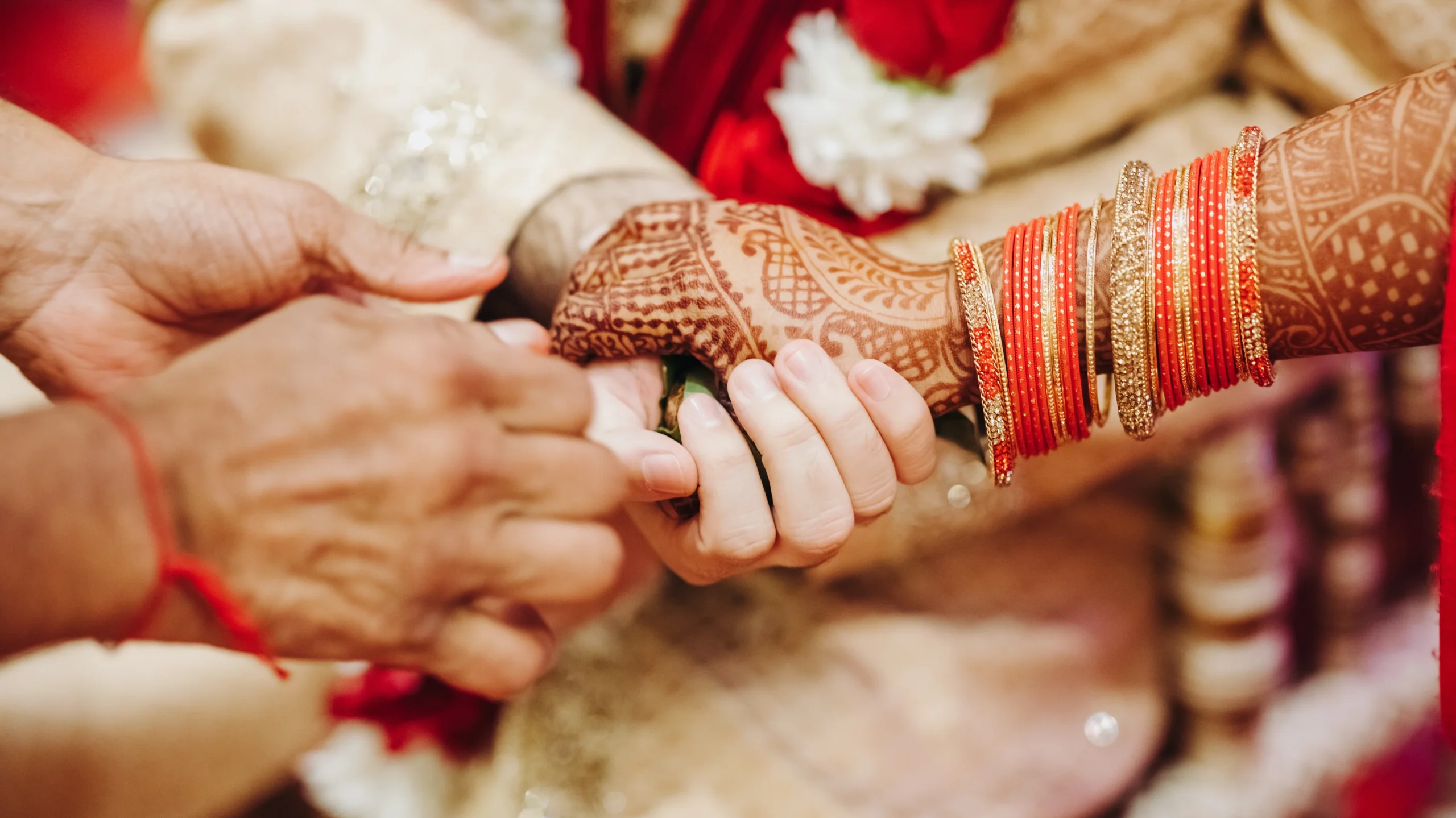
Central to Vedic tradition is Kanyadaan—the giving away of the bride by her father, entrusting her to the groom’s care. Complementing this is Paanigrahan—the groom’s gripping of the bride’s hand, signifying acceptance and commitment
Madhuparka
In some Indian wedding ceremonies, the groom is honored with Madhuparka, a mixture of yogurt, honey, and ghee offered by the bride’s father, symbolizing respect, purity, and acceptance into the family.
Varmala / Jayamala
The exchange of floral wedding garlands—Varamala or Jayamala—is a public declaration of mutual acceptance. The bride offers the groom a varamala, followed by his reciprocation, visually marking the beginning of their union.
Granthi Bandhanam (Cloth Binding)
Ceremonial cloth binding—known as Granthi Bandhanam, Hasta Melap, or Brahma Mudi in South India—symbolizes the physical and spiritual union of the bride and groom. The bride’s veil and the groom’s stole are tied together during this ritual.
Vivaah Homa & Agni Pradakshina
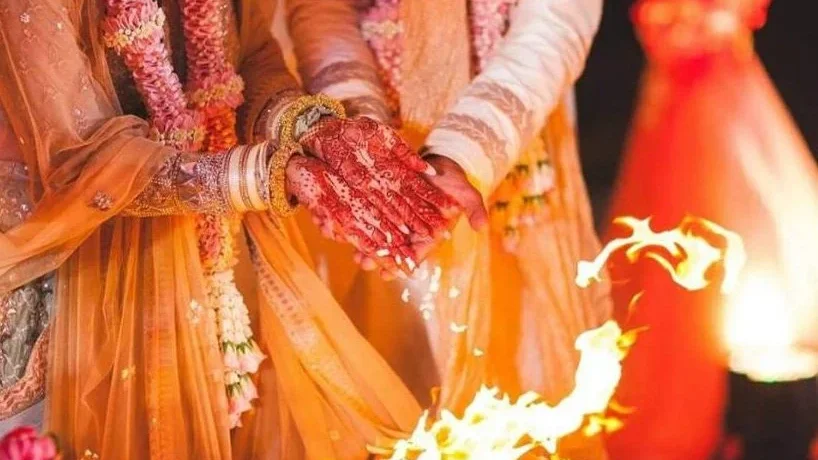
At the core of wedding rites is the Vivaah Homa, wherein offerings are made to Agni, the sacred fire, who acts as witness. The couple may circle the fire four times (Mangal Fera, as in some regional traditions) to invoke blessings for duty, love, prosperity, and spiritual liberation.
Saptapadi / Saat Pheras
Saptapadi, or Saat Pheras, is the climactic ritual involving seven steps or circumambulations around the sacred fire. Each step embodies a vow—food, strength, prosperity, family, progeny, friendship, and lifelong companionship. The marriage is considered complete after the seventh phera.
Mangalasutra and Sindoor
Following Saptapadi, the groom ties the Mangalasutra—a necklace with black beads—around the bride’s neck, and applies Sindoor (vermillion) at her hair parting. These symbols denote marital status and bless her with well-being and long life.
Pradhanam (Ring Pot Game)
In Telugu weddings, a playful ritual called Pradhanam involves a pot of water with a ring. The bride and groom fish for it—whoever finds more rings is humorously said to rule the household.
Visit our Instagram page for more details
Post‑Wedding Rituals
Ashirvad (Blessings)
Elders shower the couple with Ashirvad—blessings for happiness, fertility, and prosperity. This moment is both joyful and emotional as family members express their hopes.
Vidaai (Farewell)
The emotional Vidaai marks the bride’s departure from her parental home. Her family bids tearful farewells, symbolizing her entry into a new life.
Griha Pravesh
Now at the groom’s home, the bride’s welcoming ritual—Griha Pravesh—includes the bride accidentally knocking over a pot of rice at the entrance, signifying abundant prosperity to her in‑laws’ home.
Reception & Post‑Wedding Celebrations
A reception follows—often Western-style—with speeches, dinner, and dancing. In India, guests continue to celebrate with lavish meals and Bollywood or folk dances, sometimes in five-course vegetarian banquets.
Regional Ritual Variations
Bengali Weddings
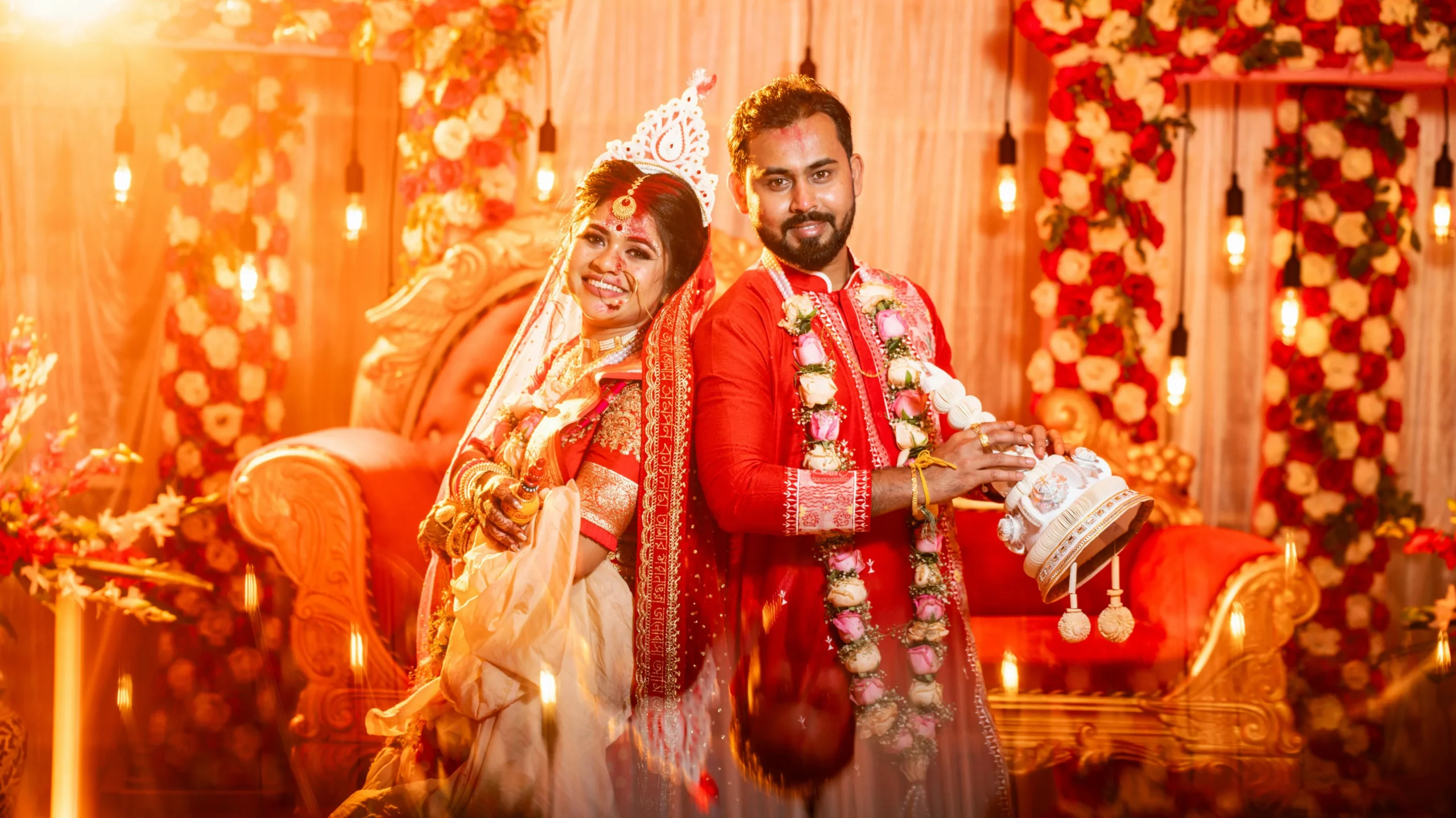
In Bengali tradition, Mala Badal (garland exchange) and Subha Drishti (first eye contact) are key. The bride circles the groom seven times (Saat Paak), then they see each other and exchange garlands.
South Indian (Telugu, Tamil, Malayalam)
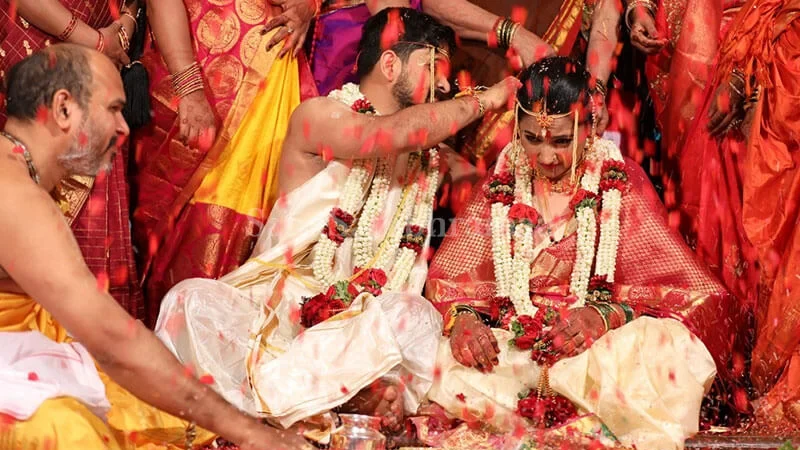
South Indian wedding traditions emphasize rituals like Brahma Mudi, Nalla Pusalu, Mattelu, Pradhanam, and Arundhati Nakshatram—symbols of binding, protection, marital status, household leadership, and cosmic conformity.
North Indian Weddings
North Indian ceremonies typically include Sehra Bandhan (groom’s veil), Shila Rohan, and a strong emphasis on Saat Phere around the sacred fire.
Marathi Weddings
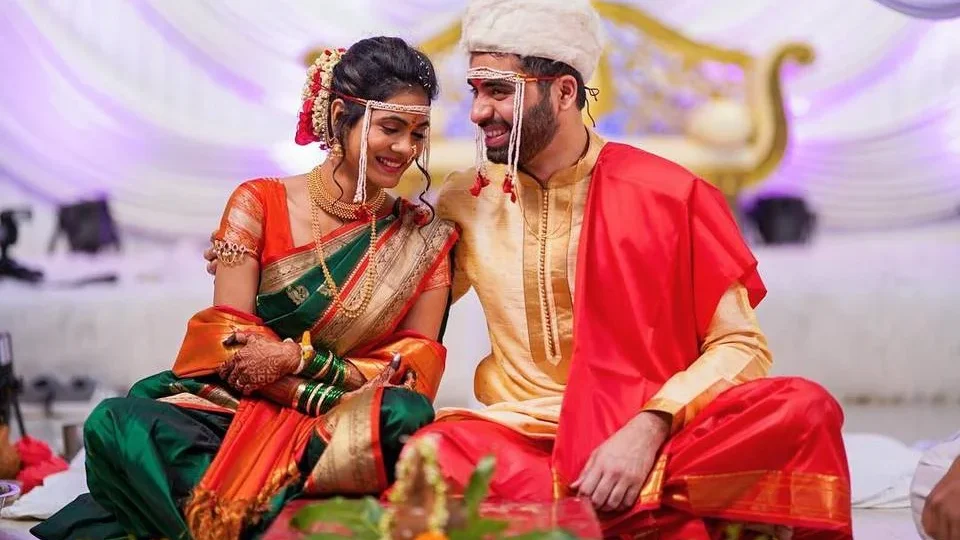
Marathi weddings feature Mangal Ashtak, Antarpat (cloth covering exchanged), and variations in Kanyadaan and Saptapadi that reflect local customs and songs.
Cultural Significance
Hindu weddings, rooted in Vedic and regional traditions, balance ancient spiritual symbolism with modern aspirations. With evolving lifestyles, the ceremonies have adapted—shorter durations, personalized vows, and eco-friendly décor. Still, core rituals like Kanyadaan, Homa, Saptapadi, and Sindoor/Mangalasutra remain central symbols shining through changes.
Conclusion
A traditional Hindu wedding is a rich tapestry of rituals, spirituality, and celebration. From vibrant Mehndi to tearful Vidaai, each step in the journey of Hindu wedding rituals step by step is charged with cultural meaning—celebrating ancestry, divine blessing, worldly duty, and eternal companionship. By appreciating each ritual’s story, families and couples don’t just host a wedding; they weave a living tradition—anchoring memory, blessing, and love for generations to come.
FAQs
Can Hindu wedding rituals be adapted for destination weddings?
Yes! Many Hindu couples now host destination weddings in resorts, beaches, or heritage venues in India and abroad. Priests can travel with the families or be hired locally if familiar with Vedic rites. Some families simplify rituals or combine ceremonies to fit time limits, while still keeping the sacred elements like the fire, mantras, and vows intact.
What is the average duration of a Hindu wedding ceremony?
A Hindu wedding can span three to five days, including pre-wedding rituals, the main wedding day, and post-wedding customs. The actual ceremony on the wedding day can last two to four hours, depending on the number of rituals performed and regional traditions. Today, many couples shorten or combine rituals to fit modern schedules without losing spiritual meaning.
What is the best time of year to have a Hindu wedding?
Hindu weddings are usually planned during auspicious months according to the Hindu lunar calendar. Most families prefer the wedding season from October to February, which avoids the monsoon and extreme summer heat. Dates are often finalized by consulting a family priest or astrologer, who checks the couple’s horoscopes for the most favorable muhurtham (wedding time).

